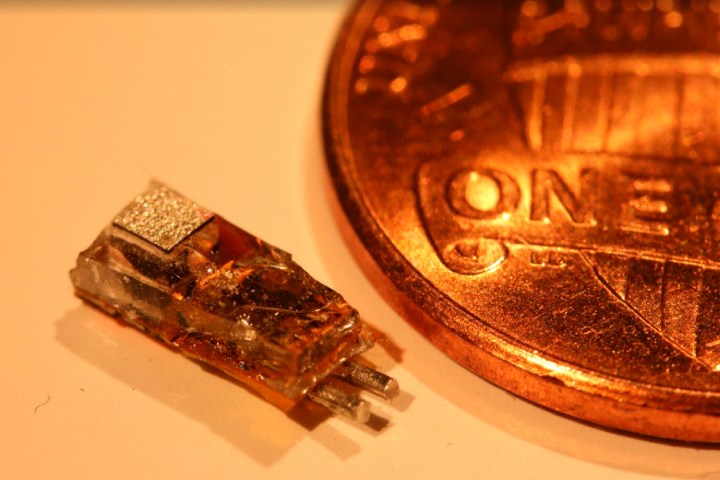
If you ever dreamed of being a real-life cyborg, researchers at Stanford University are ready and willing to help. They developed a new type of tiny nerve-stimulation implant, which could be used to treat a wide range of different medical conditions.
“The biggest application for this work is for what are being recently called ‘electroceuticals’ and ‘bioelectronic medicine,’” Jayant Charthad, a researcher on the project, told Digital Trends. “The idea is that many diseases that are currently treated using drugs or pills can be more effectively treated — and with fewer side-effects — by using stimulation of nerves. Examples of diseases that can be treated by nerve stimulation include chronic pain, rheumatoid arthritis, epilepsy, inflammatory bowel disease, bladder incontinence, even diabetes, and many more. In addition to therapeutic applications, medical researchers could also use our device for conducting scientific experiments for further understanding the nervous system and discovering new treatments for diseases.”
The tiny implantable stimulator is around the size of a medium grain of rice. This means that it could be easily implanted using minimally invasive surgery, or even injected using a needle. It’s also capable of functioning deep inside the body, through up to 10.5 centimeters of tissue, using ultrasound to communicate with the outside world. When instructed, the device can generate a very precise therapeutic impulse to a nerve. Because it contains both electrodes and an LED, it is able to carry out either (or both) electrical and optogenetic stimulation at a variety of amplitudes, durations, and frequencies.
“So far we have thoroughly characterized different parts of our system, and have performed in vitro demonstrations of the fully packaged implantable stimulator, as discussed in our recent paper,” Charthad continued. “We have also shown the capability of stimulating the sciatic nerve of a frog. The next step is to test the fully packaged devices in larger animals, which is what we are currently working on.”
Whether this exact model winds up being used on patients remains to be seen. However, it’s certainly an intriguing project which offers a glimpse at the future of medicine.
A paper describing the work was recently published in the journal IEEE Transactions on Biomedical Circuits and Systems.


